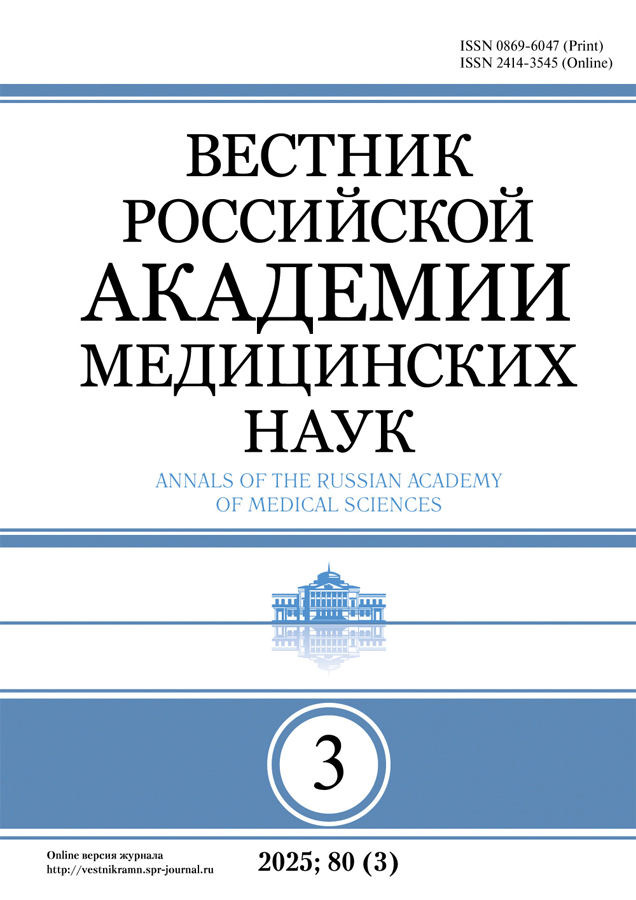GRADIENT OF MORTALITY OF PERSONS AGED 40–59 IN REGIONS OF THE RUSSIAN FEDERATION
- Authors: Boitsov S.A.1, Samorodskaya I.V.2, Tret'yakov V.V.3
-
Affiliations:
- National Research Centre for Preventive Medicine, Moscow
- National Research Centre for Preventive Medicine, Moscow, Russian Federation
- Rating agency «RIA Rating», Moscow, Russian Federation
- Issue: Vol 69, No 7-8 (2014)
- Pages: 106-111
- Section: SHORT MESSAGES
- Published:
- URL: https://vestnikramn.spr-journal.ru/jour/article/view/414
- DOI: https://doi.org/10.15690/vramn.v69i7-8.1116
- ID: 414
Cite item
Full Text
Abstract
About the authors
S. A. Boitsov
National Research Centre for Preventive Medicine, Moscow
Author for correspondence.
Email: prof.boytsov@gmail.com
PhD, professor, Director of State Research Center for Preventive Medicine
Russian Federation
I. V. Samorodskaya
National Research Centre for Preventive Medicine, Moscow, Russian Federation
Email: samor2000@yandex.ru
доктор медицинских наук, профессор, руководитель лаборатории демографиче- ских аспектов здоровья населения ГНИЦ профилактической медицины Адрес: 117334, Москва, Петроверигский пер., д. 10, тел.: +7 (495) 623-86-36 Russian Federation
V. V. Tret'yakov
Rating agency «RIA Rating», Moscow, Russian Federation
Email: v.tretyakov@rian.ru
кандидат технических наук, генеральный директор ООО «Рейтинговое агентство «РИА Рейтинг» Адрес: 119021, Москва, Зубовский б-р, д. 4, тел.: +7 (968) 766-93-66 Russian Federation
References
- Final Report of the Commission on Social Determinants of Health. World Health Organization, 2008. URL: http://www. who.int/social_determinants/thecommission/finalreport/en/ index.html (дата обращения: март 2014 г.).
- Apouey B.H. Health policies and the relationships between socioeconomic status, access to health care and health. Isr. J. Health Policy Res. 2013; 2 (1): 50.
- Кручек М.М., Молчанова Е.В. Исследование медико-демографических процессов в регионах России методом регрессионного анализа по панельным данным. Региональная экономика: теория и практика. 2013; 18: 41–50.
- Galea S., Tracy M., Hoggatt K.J., DiMaggio C., Karpati A. Estimated Deaths Attributable to Social Factors in the United States. Am. J. of Publ. Health. 2011; 101 (8): 1456–1465. Семенова В.Г., Окунев О.Б., Антонюк В.В., Евдокушкина Г.Н. Возрастные и нозологические особенности смертности населения России на фоне западноевропейских государств в 1990–2009 гг. Соц. аспекты здоровья населения: электрон. науч. журн. URL: http://vestnik.mednet.ru/ Russian (дата обращения: 08.10.2012 г.).
- Косолапов А.Б. Влияние социально-экономических факторов на показатели смертности мужского населения на Дальнем Востоке России. Совр. научн. иссл. и инновации. URL: http://web.snauka.ru/issues/2012/12/19047 (дата обраще- ния: 12.12.2012 г.).
- Морозов С.Д. Заболеваемость и смертность мужчин и женщин России в 1990-х гг. Женщина в российском обществе. 2013; 2 (67): 85–93.
- Белов В.И., Горохов В.Ф. Мужская смертность в России. Вестн. Тамбовского ун-та. Серия «Гуманитарные науки». 2013; 5 (121): 190–197.
- Иванова А.Е., Сабгайда Т.П., Семенова В.Г., Запорожченко В.Г., Землянова Е.В., Никитина С.Ю. Факторы искажения структуры причин смерти трудоспособного населения России. Соц. аспекты здоровья населения: электрон. науч. журн. 2013; 4. URL: http://vestnik.mednet.ru/content/view/491/27/ lang,ru/ (дата обращения: март 2014 г.).
- Плавинская С.И., Плавинский С.Л. Потребление алкоголя и смертность в регионах Российской Федерации. Российский семейный врач. 2009; 13 (2): 12–15.
- Иноземцев Е.С. Панельный анализ влияния потребления алкоголя на смертность в РФ. Казанская наука. 2010; 7: 52–58.
- Андреев Е.М., Зайончковская Ж.А., Кваша Е.А., Харькова Т.Л. Смертность и продолжительность жизни. В кн.: Население России 2003–2004. Одиннадцатый-двенадцатый ежегодный демографический доклад. Гл. 10. Под общ. ред. А.Г. Вишневского. М.: Наука. 2006. С. 274–305.
- Немцов А.В., Терехин А.Т. Свя занная с алкоголем сердечно- сосуд истая смертность в России. Профилактическая медицина. 2008; 11 2: 23–31.
- Zaridze D., Lewington S., Boroda A., Scélo G., Karpov R., Lazarev A., Konobeevskaya I., Igitov V., Terechova T., Boffetta P., Sherliker P., Kong X., Whitlock G., Boreham J., Brennan P., Peto P. Alcohol and mortality in Russia: prospective observational study of 151 000 adults. Early online publication. Lancet. 2014; 6736 (13): 62247–62253.
- Danchin N., Allemand H. Frequency of cardiovascular diseases and risk factors treated in France according to social deprivation and residence in an overseas territory. Int. J. Cardiol. 2014; 173 (3): 430–435.
- Ducrocq G., Bhatt D., Labreuche J., Corbalan R., Porath A., Gao R., Panchenko E., Liau C., Ikeda Y., Goto S., Amarenco P., Steg P. Geographic differences in outcomes in outpatients with established atherothrombotic disease: Results from the REACH Registry. Eur. J. Preventive Cardiol. 2013. Р. 2047–4873.
- Rosenthal T. Geographic variation in health care. Annu. Rev. Med. 2012; 63: 493–509.
Supplementary files








